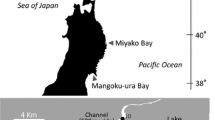Abstract
This study presents long-term fluctuation, within pond distribution and mortality of egg masses in a population of Rana dalmatina reproducing in a permanent semi-natural pond in Romania. The average number of egg masses per year was 410 (SD = 114.56, min.-max. = 265–581). The mean spawning duration (days) was 26.72 (SD = 5.53). The egg mass distribution was not constant during the years. The long-term change in the distribution of egg masses can be related to changes in the reed cover (pond variable) and landscape structure, i.e. the presence of the forest and a pasture between the pond and the forest. There was a reduction in the number of dead egg masses during the study period. We suggest that the maintenance of the connectivity with the forest and the variable amount of reed assure the main aquatic and terrestrial habitats for the agile frogs. This will allow agile frogs to shift breeding habitats in this area according to their ecological needs and find safe terrestrial habitats for summering and wintering.
Similar content being viewed by others
References
Ficetola G.F., Valota M. & de Bernardi F. 2006. Temporal variability of spawning site selection in the frog Rana dalmatina: consequence for habitat management. Anim. Biodivers. Conserv. 29: 157–163.
Gagne S.A. & Fahrig L. 2007. Effect of landscape context on anuran communities in breeding ponds in the National Capital Region, Canada. Landscape Ecology 22: 205–215.
Gollmann G., Baumgartner C., Gollmann B. & Waringer-Löschenkohl A. 1999. Breeding phenology of syntopic frog populations, Rana dalmatina and R. temporaria in suburban Vienna. Verh. Gesell. Ökol. 29: 357–361.
Gollmann G., Gollmann B., Baumgartner C. & Waringer-Löschenkohl A. 2002. Spawning site shifts by Rana dalmatina and R. temporaria in response to habitat change. Biota 3(1–2): 35–42.
Hairston N.G. 1996. Predation and competition in salamander communities, pp. 161–189. In: Cody M.L. & Smallwood J.A. (ed.), Long Term Study of Vertebrate Communities, Academic, San Diego CA.
Hartel T. 2003. The breeding biology of Rana dalmatina in Târnava-Mare Valley, Romania. Russ. J. Herpetol. 10: 169–175.
Hartel T. 2004. The long-term trend and the distribution of amphibian populations in a seminatural pond in the middle section of the Târnava-Mare Valley (Romania). Biota 4: 25–36.
Hartel T. & Demeter L. 2005. The breeding migration and population characteristics of a common toad (Bufo bufo) population in Târnava Valley, Romania. Transylv. Rev. Ecol. Syst. Res. 2: 145–154.
Hartel T., Nemes S., Cogălniceanu D., Öllerer K., Schweiger O., Moga C.I. & Demeter L. 2007. The effect of fish and aquatic habitat complexity on amphibians. Hydrobiologia 583: 173–182.
Hartel T., Nemes S., Demeter L. & Öllerer K. 2008. Pond and landscape characteristics: which are more important for the common toad? A case study from central Romania. Appl. Herpetol. 5: 1–12.
Hopey M.E. & Petranka J.W. 1994. Restriction of wood frogs to fish-free habitats: How important is adult choice? Copeia 4: 1023–1025.
Loman J. & Anderson G. 1997. Monitoring brown frogs Rana arvalis and Rana temporaria in 120 south Swedish ponds 1989–2005. Mixed trends in different habitats. Biol. Conserv. 135: 46–56.
Mazerolle M.J. & Desrochers A. 2005. Landscape resistance to frog movements. Can. J. Zool. 83: 455–464.
Méhely L. 1903. A békák ivadékgondozása. Természettudományi Közlöny 25: 425–457.
Meyer A. H., Schmidt B. R. & Grossenbacher K. 1998. Analysis of three amphibian populations with quarter century long time series. Proc. R. Soc. Lond. 265: 523–528.
Pechmann J.H.K., Scott D.E., Semlitsch R.D., Caldwell J.P., Vitt L.J. & Gibbons J.W. 1991. Declining amphibian populations: the problem of separating human impacts from natural fluctuations. Science 253: 892–895.
Petranka J.W., Smith C.K. & Scott A.F. 2004. Identifying the minimal demographic unit for monitoring pond-breeding amphibians. Ecol. Appl. 14: 1065–1078.
Reading C.J. 2007. Linking global warming to amphibian declines through its effects on female body condition and survivorship. Oecologia 151: 125–131.
Scott D.E. 1990. Effects of larval density in Ambystoma opacum: an experiment in large scale field enclosures. Ecology 71: 296–306.
Scott D.E. 1994. The effect of larval density on adult demographic traits in Ambystoma opacum. Ecology 75: 1383–1396.
Scribner K.T., Arntzen J.W., Burke T., Cruddace N. & Oldham R.S. 2001. Environmental correlates of toad abundance and population genetic diversity. Biol. Conserv. 98: 201–210.
Semlitsch R.D., Scott D.E., Pechmann J.H.K. & Gibbons J.W. 1996. Structure and dynamics of an amphibian community: evidence from 16 year study of a natural pond, pp. 217–248. In: Cody M.L. & Smallwood J.A. (eds), Long Term Study of Vertebrate Communities, Academic, San Diego CA.
Sjögren-Gulve P. 1991. Extinction and isolation gradients in metapopulations: the case of the pool frog (Rana lessonae). Biol. J. Linn. Soc. 42: 135–147.
Sofianidou T.S. & Kyriakopoulou-Sklavounou P. 1983. Studies on the biology of the frog, Rana dalmatina, Bonap. during the breeding season in Greece. Amphibia-Reptilia 4: 125–136.
Strömberg G. 1988. A study of the jumping frog (Rana dalmatina) in Blekinge, Sweden, 1982–1988. Memoranda Soc. Fauna Flora Fenn. 64: 107–109.
Teplitsky C., Plénet S. & Joly P. 2003. Tadpoles’ response to risk of fish introduction. Oecologia 134: 270–277.
Van Buskirk J. 2005. Local and landscape influence on amphibian occurrence and abundance. Ecology 86: 1936–1947.
Viertel B. 1999. Salt tolerance of Rana temporaria: Spawning site selection and survival during embryonic development. (Amphibia, Anura). Amphibia-Reptilia 20: 161–171.
Waringer-Löschenkohl A. 1991. Breeding ecology of Rana dalmatina in Lower Austria: a 7-years study. Alytes 9: 121–134.
Wells K. 1977. The social behaviour of anuran amphibians. Anim. Behav. 25: 666–693.
Author information
Authors and Affiliations
Corresponding author
Rights and permissions
About this article
Cite this article
Hartel, T. Long-term within pond variation of egg deposition sites in the agile frog, Rana dalmatina . Biologia 63, 439–443 (2008). https://doi.org/10.2478/s11756-008-0060-9
Received:
Accepted:
Published:
Issue Date:
DOI: https://doi.org/10.2478/s11756-008-0060-9




